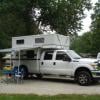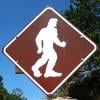Our first trips in warm weather found my CPAP use almost no different than at home. The humidifier was set at 2. However, our last 2 trips have been in cold temperatures ranging from 32 to the 40's. We didn't keep the heat on, relying on the warmth of our sleeping bags. I noticed all through the night a lot of moisture in the hoses and spraying from the relief opening. In the morning I took the hose off and held it out the door, watching a lot of moisture drip out. Do I lower the setting to 1 or increase it, or do nothing? Any advise from my fellow CPAP campers?
jd



















